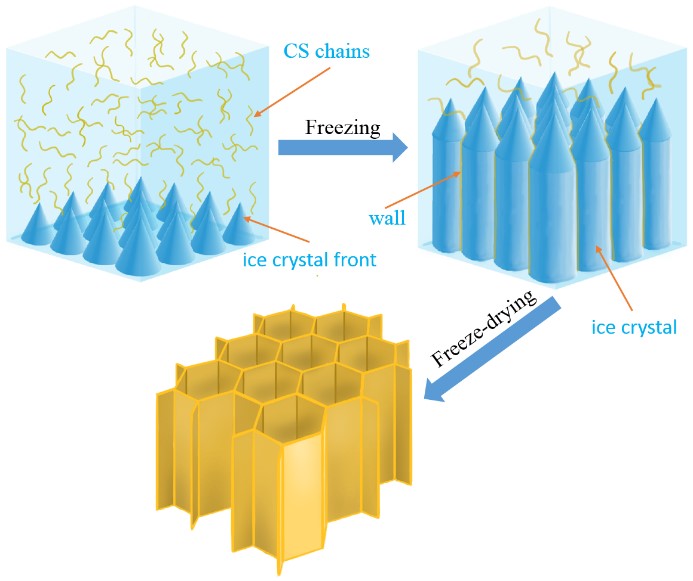
The development of clean energy is important in dealing with challenges such as the exhaustion of non-renewable energy, climate change, and air pollution. Nuclear energy, as a promising clean energy, has attracted extensive attention. However, radioactive waste is inevitable from the extraction of nuclear fuel to the disposal of nuclear waste, and the improper disposal will cause pollution to the environment and then do harm to human body.
In a study published in Environ. Chem. Lett., a research group led by Prof. YANG Fan from Fujian Institute of Research on the Structure of Matter (FJIRSM) of the Chinese Academy of sciences developed a series of three-dimensional (3D) porous materials for specific adsorption of radionuclides.
In order to solve the problem of radioactive contamination of water by radioactive pertechnetate anions (99TcO4-) in nuclear waste liquids, the researchers fabricated a kind of 3D aerogel material with chitosan as the matrix by the sol-gel method with an ice-template freeze-drying procedure. The cellular structures porous adsorbent was functionalized to give it the ability of selective adsorption of 99TcO4-.
The experimental results showed that the adsorbent could adsorb 99TcO4- in a highly competitive anion environment and had a complete adsorption capacity over a wide range of pH values (2 to 12). Even in the 3 M HNO3 system, which contained a large number of competitive ions (more than 2500 times) and was extremely acidic, the adsorption performance was maintained.\
In the simulated Hanford low-activity waste (LAW) melter recycle stream, 98% of 99TcO4- was successfully removed when the feed ratio (solid phase / liquid phase) reached 20 g/L, which is remarkable compared with the previous results.
Besides, the researchers found that the selective adsorption ability of the adsorbent to 99TcO4- was derived from the synergistic effect of the active functional group at the adsorption site center and the surrounding branched chains. The adsorbent can be easily compressed to at least 5% of its original volume after decommissioning, which greatly reduces the difficulty and cost of radioactive solid waste disposal.
Moreover, Prof. YANG’s group developed a kind of 3D elastic silica aerogel-like porous adsorbent, which can reduce the radioactive pollution by thorium (Th), a potential nuclear fuel, in monazite.
The study sheds light on the rational design of adsorbents for decontamination of contaminant from complex water systems.

Schematic illustration of the fabrication of adsorbent (Image by Prof. YANG’s group)

86-10-68597521 (day)
86-10-68597289 (night)

52 Sanlihe Rd., Xicheng District,
Beijing, China (100864)

